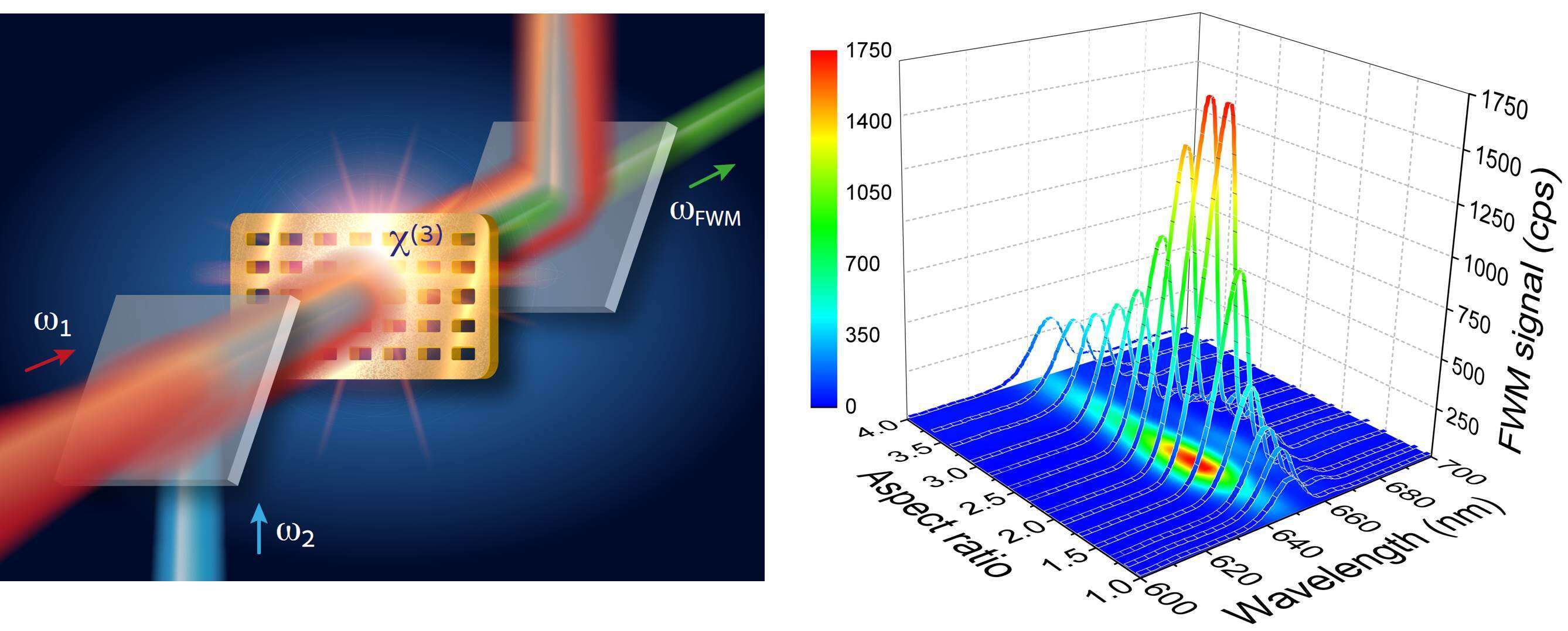
Efficient Four-Wave Mixing from Rationally Designed Arrays of Metallic Nanocavities
In the design of efficient, ultrathin optical nonlinear materials, metallic nanostructures are natural candidates due to the strong intrinsic nonlinear response of noble metals [1]. Furthermore, the enhanced near-field at plasmonic resonances can boost the nonlinear optical response by several orders of magnitude. With modern nanofabrication tools, the shape of the metallic nanostructures can be controlled with great accuracy, opening up the possibility for designing nanostructures with optimized optical response for specific applications.
We show that the rational design of the shape of nanoholes milled in a thin free-standing gold film leads to enhanced four-wave mixing (FWM) generation [2]. The infrared-to-visible conversion efficiency via FWM equals or surpasses the efficiencies calculated for the best nonlinear crystals of the same thickness. The design goes through finite difference time domain calculations of the linear and nonlinear optical responses of arrays of nanorectangles with different aspect ratios (AR), followed by the corresponding femtosecond FWM experiments. The FWM efficiency is maximized when the nanocavities are multiply resonant with the input and generated beams. Properly controlling other the parameters of the arrays can lead to further enhancement and broadband operation. The design of the metallic nanostructures with enhanced nonlinear response is fundamental for the development of efficient, ultrathin, broadband nonlinear optical metamaterials, and the concept may be implemented for the optimization of other nonlinear optical properties.

[1] M. Kauranen and V. A. Zayats, “Nonlinear plasmonics”, Nat. Photon. 6, 737-748 (2012);
[2] E. Almeida and Y. Prior, “Rational design of metallic nanocavities for resonantly enhanced four-wave mixing”, Submitted (2014).
euclides.almeida@weizmann.ac.il
Powered by Eventact EMS